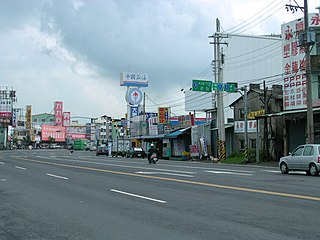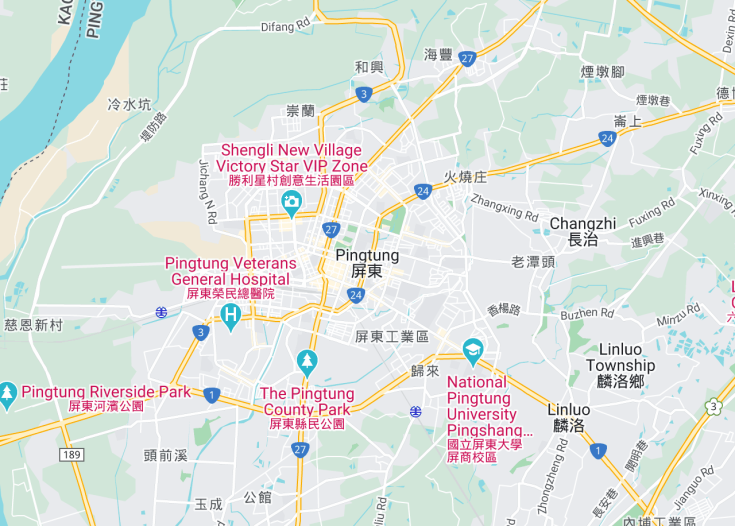Pingtung County, located at the southern tip of Taiwan, is a captivating destination brimming with tropical allure. Known for its picturesque beaches, lush mountains, and rich Indigenous cultures, Pingtung offers a serene escape into nature’s embrace. The region is also celebrated for Kenting National Park, which showcases stunning coastal scenery and diverse marine life. Whether you’re interested in ecological adventures, cultural exploration, or simply relaxing by the Pacific waves, Pingtung provides a unique blend of attractions that cater to all desires.
Consider visiting Pingtung during the cooler months from November to April to fully enjoy outdoor activities and local festivals without the sweltering heat.
Reserve a day to explore the Dapeng Bay National Scenic Area, perfect for bird watching, cycling around the lagoon, and enjoying sunset views.
Top things to do & see in Pingtung
Select the following sights and activities to discover best tickets and tours available in Pingtung.
Pingtung: Gateway to Natural Splendor
| Country | Taiwan |
| Time in Pingtung | GMT+8 |
| Language spoken | Mandarin |
| Population | 840,000 (According to 2021 data from the Taiwan Statistical Bureau) |
| Currency | New Taiwan Dollar (NTD) |
| Airports |
|
Pingtung, the southernmost county of Taiwan, offers an enchanting blend of natural beauty, cultural richness, and historical depth. Known for its breathtaking landscapes, this region houses Kenting National Park, one of Taiwan’s most famous natural attractions. This park alone boasts white-sandy beaches, crystal-clear waters, and a vibrant marine life that make it a perfect spot for water sports, such as snorkeling and scuba diving.
Apart from its natural allure, Pingtung is steeped in history, evidenced by its numerous heritage sites like the old railway stations and the ancient battlefields. The county also plays host to the Pingtung Lantern Festival, which illuminates the sky annually, drawing visitors from across the globe.
The agricultural sector of Pingtung is robust, with a flourishing tropical fruit market, especially renowned for its mangoes and pineapples. This rich agricultural backdrop not only supports the local economy but also offers a feast of flavors for those visiting the local markets. The rural scenery, marked by rolling hills and verdant fields, contrasts with the urban vibrancy of Pingtung City, the capital of the county.
Pingtung’s warm tropical climate makes it an ideal year-round destination. Whether it’s the sandy beaches of Kenting, the historical allure of forts like Dong Long Fort, or the cultural vibrancy of its festivals, Pingtung embodies a unique fusion of nature and culture that enthralls and entertains.
Where is Pingtung?
Located at the southern tip of Taiwan, below Kaohsiung, Pingtung spans from the central mountain range in the east to the Taiwan Strait in the west.
Distances:
| Route | Distance by car | Time by car |
|---|---|---|
| Taipei to Pingtung | 216 miles (348 km) | 5 hours |
| Taichung to Pingtung | 153 miles (246 km) | 3.5 hours |
| Kaohsiung to Pingtung | 17 miles (27 km) | 35 minutes |
What is Pingtung famous for?
Pingtung is most renowned for its natural landscapes and rich biodiversity, notably Kenting National Park. It’s also famous for its tropical agriculture, producing some of Taiwan’s best mangoes and pineapples.
History
Prehistoric Era to 17th Century: Indigenous Roots and European Arrival
The region now known as Pingtung has been inhabited for thousands of years, primarily by the indigenous peoples of Taiwan. These early inhabitants were mainly Austronesian-speaking tribes, who lived a hunter-gatherer lifestyle. With the arrival of European colonizers, notably the Dutch in the early 17th century, Pingtung began to see significant changes. The Dutch established forts and conducted trade, influencing the local politics and economy.
17th Century to 1895: Qing Dynasty Rule
Following the expulsion of the Dutch by Koxinga in 1662, the Qing Dynasty took control, marking a new chapter in Pingtung’s history. During this period, significant Han Chinese migration took place, influencing local culture and demographics. The Qing government focused on agricultural development, transforming Pingtung into a productive agricultural center.
1895 to 1945: Japanese Occupation
After the First Sino-Japanese War, Taiwan, including Pingtung, was ceded to Japan. The Japanese administration introduced modern agricultural techniques and infrastructure improvements, significantly impacting Pingtung’s economic landscape. This era also saw the growth of the sugar and rice industries, with Pingtung playing a crucial role.
1945 to Present: Economic Development and Cultural Preservation
Post World War II, Pingtung reverted to Chinese rule under the Republic of China. The subsequent decades were marked by rapid economic development, industrialization, and tourism. Today, Pingtung is known for its rich cultural heritage, preserving the traditions of both its indigenous populations and historical immigrant groups, while also embracing modernity and development.
Visit Pingtung
What to see and do in Pingtung, Taiwan
Explore the scenic beauty and cultural richness of Pingtung from its tropical beaches to historical landmarks. Key attractions include:
- Kenting National Park, renowned for its stunning beaches, marine life, and hiking trails.
- The National Museum of Marine Biology and Aquarium, offering insights into marine biodiversity.
- Indigenous villages where visitors can learn about the local tribes’ cultures and traditions.
- Dapeng Bay National Scenic Area, perfect for bird watching and sailing.
Festivals and Events in Pingtung
Pingtung is vibrant with festivals throughout the year, celebrating both traditional Taiwanese culture and unique local customs. Noteworthy events include the Pingtung Lantern Festival in February, where colorful lanterns light up the night, and the Kenting Music Festival in April, featuring live music and performances by the beach.
Best time to visit Pingtung
The optimal time to visit Pingtung is between October and April. During these months, the weather is generally cooler and dryer, providing ideal conditions for exploring outdoor attractions and participating in local festivals.
Is Pingtung worth visiting?
Pingtung offers a compelling blend of natural beauty, cultural richness, and recreational activities that cater to a variety of interests. Visitors can enjoy everything from pristine beaches and national parks to rich cultural exhibitions in museums and lively local festivals.
However, it is important to note that the region can be quite crowded during peak tourist seasons, and the summer months can bring hot, humid weather that some may find uncomfortable. Overall, Pingtung is a destination worth considering, especially for those who appreciate a mix of nature and culture.










